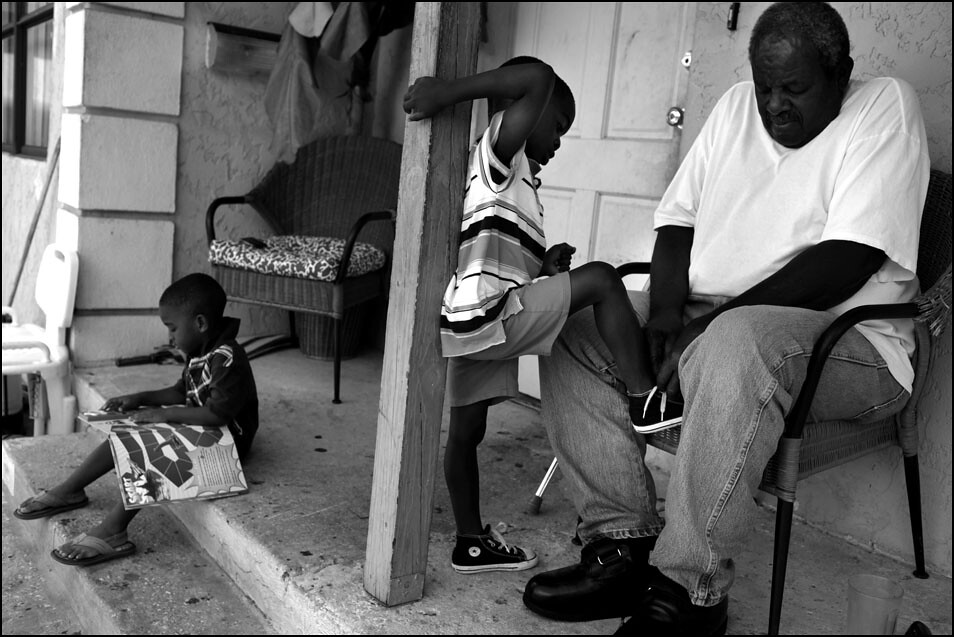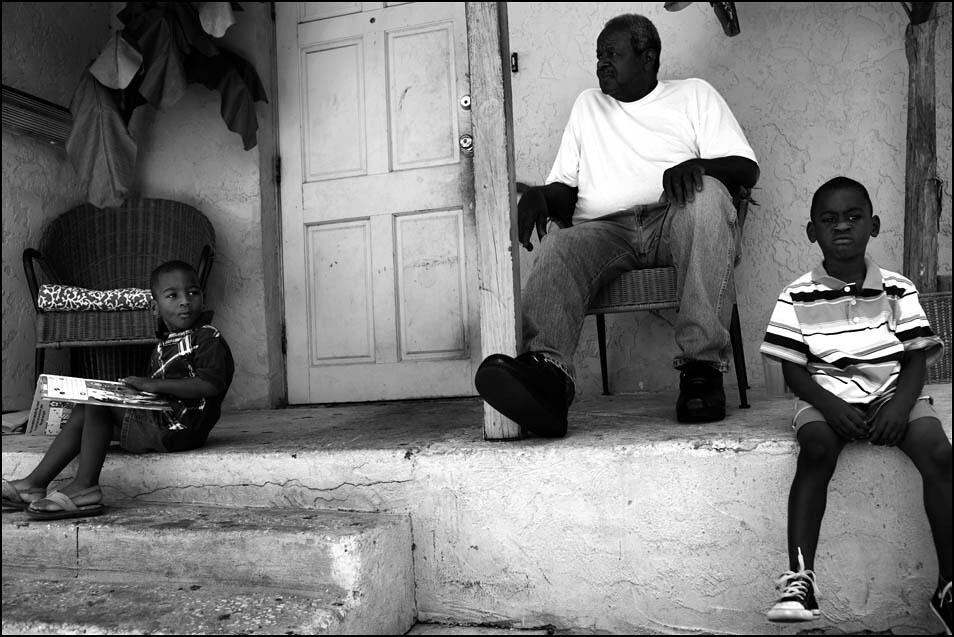Spotlight On Lexey Swall
Oct 15, 2011
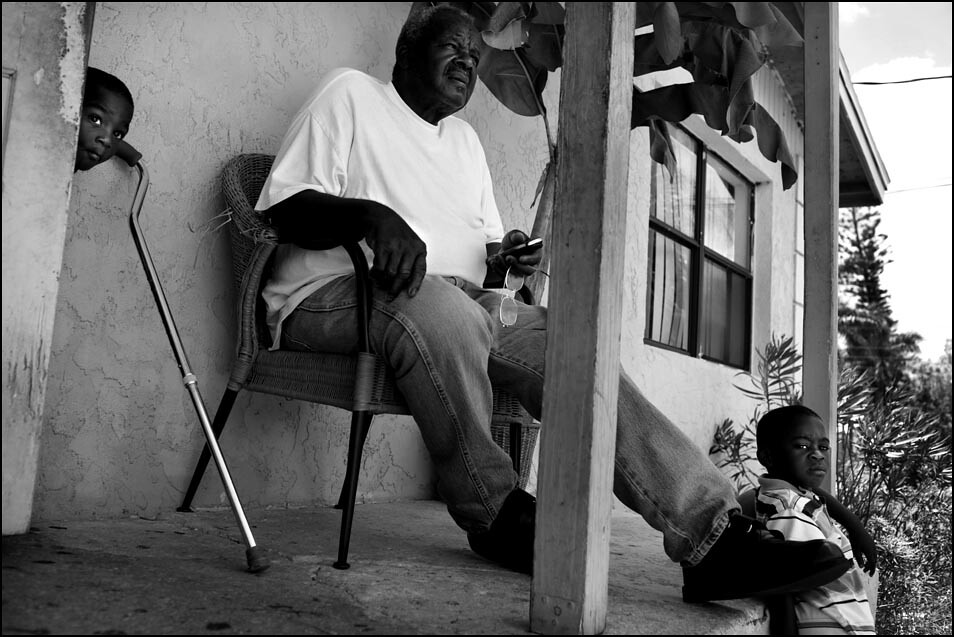
LEXEY:
First, let me thank you for asking me to be a part of your blog. I am
truly honored.
This picture was taken while doing a profile on Rev. Joe Williams. He's
a pillar in the black community in Naples. He is the pastor of Triumph,
the Church and Kingdom of God in Christ, one of three historically black
churches in Naples- it was part of the series I did a year before on the
three churches in honor of the 100th anniversary of the NAACP. The
reporter, Katy Torralbas, and I decided Joe was worth his own story. He
has raised children, grandchildren and, now, his great-grandchildren in
the house he bought in River Park community in 1961. River Park is the
first area of Naples where the black community was able to buy property.
I have covered River Park extensively through various daily and long-term
stories during the past eight and a half years that I've worked at the Naples
Daily News. I had never thought of putting all of these assignments together
in as a cohesive collection, but I realized after doing the story on Joe that a
portrait of the community had emerged in my archive. Since this realization,
I've created a spot on my website about River Park and when shooting there,
I've shifted my thought process to think about the neighborhood as the subject.
It's a work in progress at this point. It's not something I devote all of my time
to, but over time, I want to reflect all aspects of this community.
TID:
How does this image fit in with the River Park story?
LEXEY:
Joe is a main character in River Park. He's one of the few elders left
in the neighborhood who has been there since the beginning. He's kind
of the watchman, the overseer. I think of him as a front porch pastor.
As people walk or drive by they always wave to him, or people randomly
stop by to ask for advice. One day while sitting in his front yard with
him, a group of girls walked by, and turned and stopped to wave him
over to ask him a question.
One of the girls was pregnant and asked Joe if he thought it was ok for
her to have an abortion. He told her no. He said if she didn't want the
child, someone else would want to love it. As far as I know, she didn't go
through with it. He is a voice of reason in the community and a source of love.
TID:
Now, onto the image itself. Tell us how this image was
made, and what challenges you faced?
LEXEY:
This image is of Joe and two of three of his great-grandchildren who
live in his home. Joe's granddaughter, Shaniqua, was the boys' mom. She
was killed in front of the boys by her friend's ex-boyfriend. The same
day, the boys came to live at Joe's home. Shaniqua also grew up there.
When we decided to do the profile on Joe, I didn't necessarily think
through all the scenarios I could photograph of him. It pretty much
turned in to days and days of shooting one scenario. Him, sitting out
on his porch or in the front yard. That's really the majority of his
life. I kept going back to the office telling my editor that I wasn't
sure what I was getting because every day is the same. Sometimes with a
story, I can plan strategically which days to shoot pictures by finding
out when stuff will be going on in the lives of those I'm covering. It
was impossible to do that with Joe because he didn't really plan
anything but church on Sunday. So, I would just drive by his house when
I had time. It felt a whole lot less like I was doing a story, and more
like I was just hanging out. I would sit with him for hours. Sometimes
in silence. Sometimes talking. I decided that was ok. It was more
important to be comfortable in his space and get to know him, than it
was to make a photo.
That said, when I did shoot pictures, especially on days when he sat on
the porch and not in the yard, I felt pretty confined to the area where
he was. If I went across the street, or too far in to the yard to
shoot, I didn't think the a moment would translate the way I wanted.
So, I would sit and hang out on or around the porch and wait for
something to happen.
That's how it was on the day I shot this photo. Thankfully, with the
boys around, it allowed for some spontaneity. I was looking for
something that showed Joe's character or said something about his life.
Whether it was how gentle he could be with the boys, or something about
him being the watcher of the neighborhood. The boys were in and out of
the house, playing in the yard and hanging with Joe as they waited for
their other brother to come home from school.
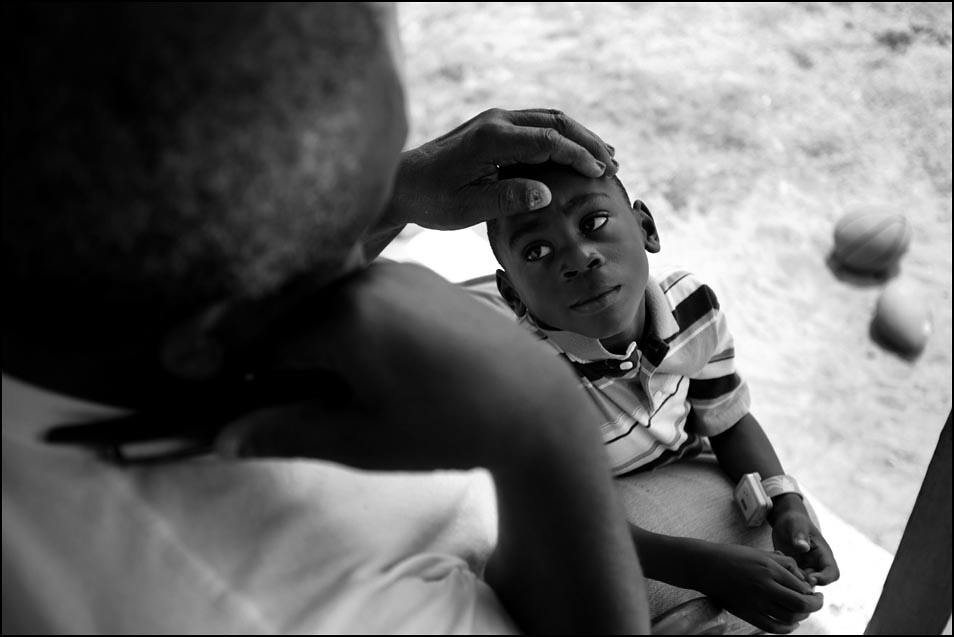
This image shows Joe exactly as he is: sitting on his porch, watching the
neighborhood with a phone in his hand in case he gets a call, or needs
to call the police if trouble starts. Also, it shows the boys watching with
him. I love how Eric, at left, is peaking out and Charlie, right, looks like
he's so cool, like he owns the place. I felt like this picture showed Joe's
influence on the boys.
Spending days with Joe reminded me to slow down and just be patient.
But, more importantly, I think it reaffirmed the importance of just
being with the people you're telling stories about. I know so many
things about Joe's life and how he feels about love and family. I'm a
better person for it.
TID:
This picture is part of a larger project, can you talk
about your approach, in general, to working on this
(and with this - long-term projects in general)
LEXEY:
This picture is part of a larger project now. But, when I shot it, I
didn't realize I would be compiling all of my images from River Park to
create a larger piece. Since then, I've been trying to figure out how
to go back to River Park with an approach that will add to what I
already have. I've photographed marches in the streets, funerals,
church services, features, arrests and other situations — all for daily
assignments or stories over time in River Park — but there are
inevitable gaps when I look at the River Park story as a whole. Even
something as simple as images from various times of day. When shooting
stuff for daily assignments, they are rarely from night time situations.
But, if you're going to do a story about a neighborhood, it's an obvious
question — what does it look like at night? What events take place at
that time? I need to look at the neighborhood as a character, and the
people who live there are the distinguishing qualities of that character.
This is my challenge now.
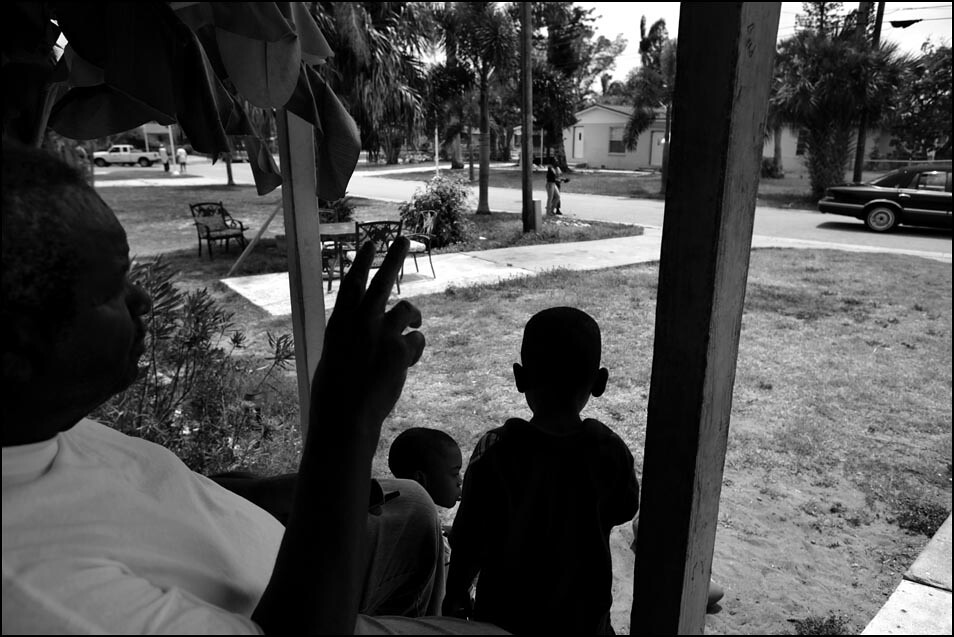
Photographers who are working at newspapers should try to view their
community or subsections of the community in a longterm way, even if
they're just shooting a daily assignment. Sometimes, without perspective
it's hard to do this. That is the beautiful thing about spending as much
time as I have in Naples. I've been able to gain perspective on the community.
When I first started my job at the paper, my mind wasn't open to a possibility
of telling an overall longterm story about River Park. Who knows, maybe it
wouldn't have worked out if I had known it from the beginning. I have been
able to form bonds with people in River Park that maybe that could only have
happened over time.
TID:
What are some lessons you learned throughout this project,
and what has surprised you?
LEXEY:
Something I've learned is you never know who is going to be the voice
who vouches for you later. I did a photo column once on the ice cream
man who has been driving through that area for years. I rode in the
truck while he was going around the neighborhood and a few years later,
when I was doing the story on Joe, one of the girls I had met through
the window of the ice cream truck recognized me when she came to see
Joe. Because of that chance meeting before, I think she was more at
ease with me. The ice cream man has also happened upon me in the
neighborhood since that time, and because of our positive interactions
and the community's trust of him, it helps them trust me.
Every relationship is important and deserves respect.
Be patient. This should be the mantra of the photojournalist. I knew I
needed patience even before this project, but I'm constantly reminded.
I try to leave myself open to any possibility, so I haven't been surprised
by too many things.
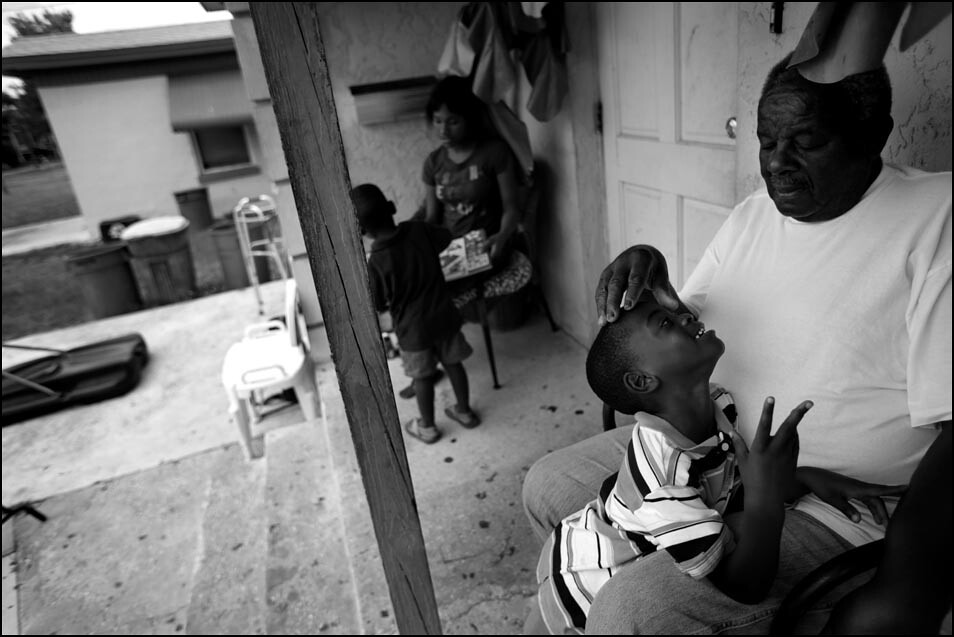
TID:
Have you ever experienced any resistance to working
on this project within the community, and if so, how did
you handle it?
LEXEY:
I always got the impression that people in the community accepted that
Joe was worth a story. He is an important and a positive force in the
neighborhood, so, it was okay that I was there with him. When people
asked what I was doing they nodded like they understood when I told
them. And they all said, "he's a pillar." So, there was no real
resistance with the story about him.
That didn't always translate into letting me photograph the people
surrounding him in his life. His quasi-former-son-in-law lived with
him, as well, at the time. He would play cards or dominoes in the back
of the house, and he never really was okay with me taking his photo.
Never hostile or upset I was there, but seriously camera shy. I always
hoped I could wait him out and eventually, it would be okay. But, that
didn't really happen. There were a lot of people like that. That
doesn't mean I've stopped trying.
TID:
What has surprised you that you didn't realize before by
documenting the community?
LEXEY:
One time, a girl told me that if she ever saw white people drive
through her neighborhood in River Park, she thought they were
there to buy drugs. I don't know if what she is saying is true, but
that was her perception. It made me wonder what people thought
of me every time I drove in to the area.
I suppose this answer kind of goes with your last question, as well.
I've learned that I need to throw preconceived notions about how
people will react to me out the window. I used to think, "man,
they're going to wonder why a little white girl like me wants to
come in and ask all kinds of questions about their community."
I had a preconceived perception about what THEIR perceptions
of me would be. Does that make any sense? The point is, people
were open with me — more so than I thought they would be.
There are people I've talked to in River Park who I never ever
thought would give me the time of day based on the fact that
I'm a journalist and that I'm trying to cross cultural lines. It
sounds silly considering how diverse the country is. But, Naples
is economically segregated in a way that cuts a division between
races. This division made me think maybe people would be
skeptical of me. But they were open and willing to talk. Conversely,
I've covered people in other communities who I thought would be
completely open with me and would allow access, yet they are
seriously paranoid about exposure have been more than happy
to tell me to take a hike.
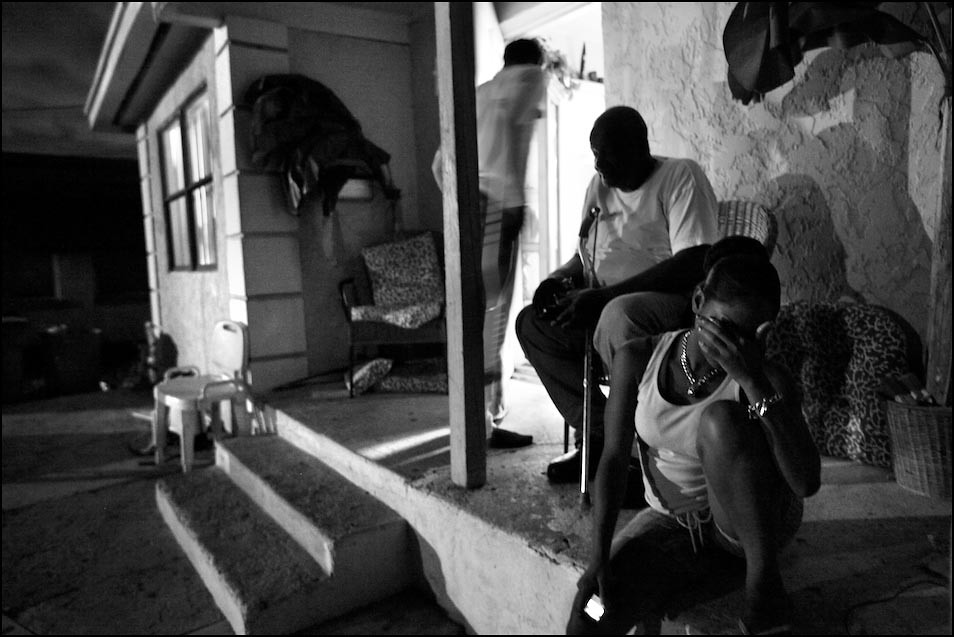
One time I was covering a drug bust in the neighborhood and I received
a lot of verbal hostility from people as I photographed those who were
being arrested. It's understandable, but I just continued doing my job
and tried to talk with the people who I recognized. That was years ago,
long before this project was even a twinkle in the eye. If I had to
cover the same thing now, now that I'm more recognizable in the
community, I often wonder how people would react to me.
I think the more time I've spent there, the more people are okay with
me being around when things aren't going well. I've invested the time
during the happy occasions, so I hope many know I'm not just there to
exploit their struggle during the bad.
TID:
What did you learn about yourself in this process?
LEXEY:
I think I learned that I'm pretty shy about shooting. I notice it
more when I'm covering people who are from different cultural
backgrounds than my own. Not that I am MORE shy with people
from different backgrounds, I just NOTICE it more in myself. I
realize that there are still times, even after being in this profession
as long as I have, that I'm timid about raising the camera. I really
hate that about myself. Seriously. But, I've had to really learn to
listen to my gut and watch for visual cues of comfort in people
I'm photographing. I don't know if this sounds rudimentary, but
it's my experience.

+++++
Lexey Swall is currently a photojournalist at the Naples (Fla.) Daily
News. Prior to that she worked as a photojournalism intern at The Star
Tribune in Minneapolis, Minn., The Star-Ledger in Newark, NJ, The Los
Angeles Daily News and at her hometown newspaper, The Bakersfield
Californian.
Swall graduated from San Jose State University in 2002 where she
received a Bachelor of Science degree in photojournalism with a minor
in women's studies. She also received an Associate of Arts degree in
journalism from Bakersfield College.
Swall has garnered awards from POYi and BOP, including an honorable
mention as Best of Photojournalism 2006 Photographer of the Year (small
markets) and several Florida state journalism competitions. She is an
alumna of the Eddie Adams Workshop (2001) and was a finalist for the
William Randolph Hearst National College Journalism Competition (2001).
You can view her work at:
+++++
Next week on TID, we'll take a look behind this image from Brandon Tauszik,
who documented the last days of Harold Camping's followers who believed
the rapture would occur in May:
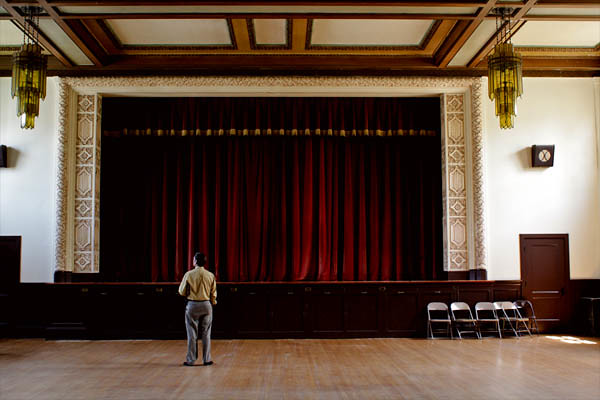
As always, if you have a suggestion of someone, or an image you
want to know more about, contact Ross Taylor at: [email protected].
For FAQ about the blog see here:
